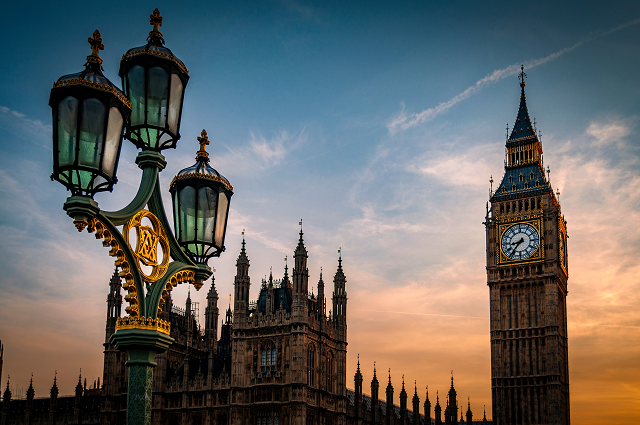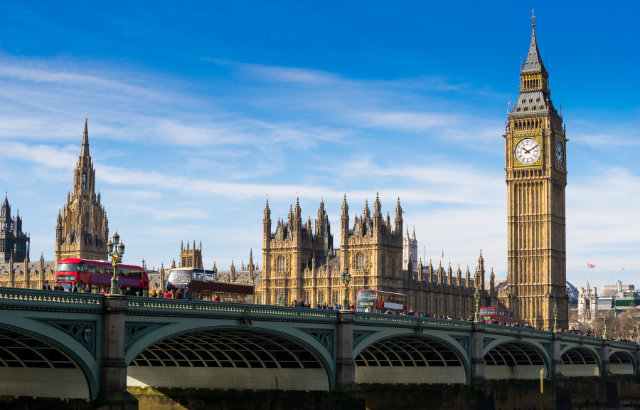People say Starmer needs a vision. But rigid visions come back to bite you
Colm Murphy, Lecturer in British Politics in the School of Politics and International Relations has written for ‘Labour List’ on the the relationship between political ideas and power.

Today, the fame of 41st US president George H.W Bush is eclipsed by his predecessor and successors. But he casts a surprisingly long shadow in British politics. In 1987, he coined the phrase “the vision thing”. The term has since seeped into the commonsense of transatlantic political journalism.
Fast forward to 2023, and despite twelve slogans, five “missions” and consistent poll leads, Keir Starmer stands accused of fluffing “the vision thing”. Some prosecutors are instinctive critics: the director of a Conservative think tank, a Corbyn-era new left journal. However, they include the Guardian, which has chided Labour for offering no account of “what Sir Keir or his party clearly stand for”.
Starmer’s defenders have countered that, if you look hard enough, he does have a vision, or that the importance of “vision” might be overstated. And these critiques are partly a proxy for questions about Labour’s electoral coalition in 2024.
At the heart of this debate, though, is the relationship between political ideas and the exercise of power. How does an office-seeking Labour leader outline a “vision”? What does that look like? And is it necessary to win an election? Or to govern the country? Or to transform it?
New Labour was just one of many visions of ‘modernisation’
One reflex Starmer’s defenders and critics share is to compare him with Tony Blair in his 1990s prime. Starmer encourages this himself with his recent (and rather imprecise) promise of “Clause IV on steroids”. Yet, my new book Futures of Socialism (Cambridge University Press) shows that we must look further back, to the 1970s and 1980s, to understand the role of ideas, or “visions”, in the birth of New Labour.
Futures of Socialism is a new history of Labour’s “modernisation” debates from 1973 to the 1997 landslide. It dives into the vibrant, fractious, and now quite strange world of the left at the close of the millennium.
In the late twentieth century, British socialism confronted threats, opportunities, and transformations: electoral defeats, neoliberal advances, globalisation, deindustrialisation, European integration, changing gender roles and a new politics of race. Futures of Socialism considers the thinkers and politicians who argued that Labour must “modernise” in response.
Crucially, these people came up with different answers and competed for influence. Kinnock, Blair, Brown, and Mandelson were among them. But so too were politicians from Patricia Hewitt to Ken Livingstone, Bryan Gould to John Smith. Outsiders and affiliates were key too: opinion consultants, trade unionists, academics, feminist theorists, journalists, think tankers, and campaigners.
Some visions faded into obscurity. (Anybody remember market socialism? Or neo-corporatism?) Others, like constitutional reform and the “knowledge economy”, became pivotal. My book shows that New Labour was not the inevitable outcome of “modernisation”: there were important, possibly better roads not taken. Nor, however, was New Labour a surrender to “Thatcherism” or “neoliberalism”. It was a product of this collective reinvention of social democracy.
What does this history tell us about the debate over Starmer’s “vision” for 2024? Potentially many things. But there are two clear takeaways.
Ambitious visions can become a millstone
First, if it is too ambitious and entrenched, a “vision” can become a millstone. For power seekers, a degree of flexibility is no bad thing.
A classic example is the Bennite “Alternative Economic Strategy” (AES), first developed in 1973. The authors of the AES undoubtedly had vision. Responding to Harold Wilson’s 1960s struggles, globalisation and economic turmoil, they called for expanding public ownership and industrial democracy, capital, price and import controls, and big government spending hikes.
Some at Labour HQ will doubtless be reaching for their icepicks. But it is worth stressing that this strategy is fifty years old, forged in a different world. Parts of the Labour Left’s 1970s policy agenda had plausibility, and its contributors included future New Labour ministers. A sympathetic analysis of its failure is useful for all parts of the left.
The strategy collapsed for several reasons, including electoral and factional ones. Crucially, its core analysis pickled over the 1970s, and was overloaded with unrealistic goals. Meanwhile, new challenges emerged, including accelerated deindustrialisation and the collapse of French President François Mitterrand’s Keynesian gamble. By 1983, Labour was lumbered with a stagnant and unwieldy “vision” as the world moved on.
This is not a failing limited to the Labour Left (see New Labour’s pre-2008 celebration of the City of London’s world-leading “innovation”). Starmer’s office should avoid getting trapped into an overly rigid “vision” in case the tide suddenly comes out.
The left often has a surfeit of policies
Second, a plausible and coherent “vision” will, by strategic necessity, shut down some ideas. The left often has a surfeit of policies. The usually more urgent question for an opposition leader is what to cull, and what to keep.
The late 1980s and early 1990s were intellectually creative years for the British left. Kinnock’s Policy Review was transforming the party; think tanks like the IPPR and Demos were born. Key concepts and reforms emerged: the “New Times”, “Social Europe”, “market socialism”, the All Women Shortlist, Charter 88, and the “stakeholding economy”.
The creators of “New Labour” absorbed some of these ideas. But others were consciously ditched. David Miliband, who worked at the IPPR before becoming Blair’s policy head in 1994, remembers “choosing our ground” as pivotal to the “project”.
As such, the real debate today is not “does Starmer have a vision?”, but “does Starmer have the right vision?” A full answer would naturally reflect personal beliefs. But for strategic reasons, Starmer would be wise to learn from New Labour’s mistakes.
By 1997, New Labour had a serious constitutional reform programme, an analysis of the “knowledge economy”, plans for public services investment, and a position on crime. However, its agenda was weaker elsewhere. The 1990s modernisation debates mostly avoided multiculturalism and racism, limiting the coherence of Labour’s policies in office. Some agendas, like increased gender equality, were half-developed. Others, like the stakeholding economy and Social Europe, were left to wither.
This had implications. Although it was often highly capable, one characteristic of New Labour in power was its growing intellectual sterility, as its disciplined 1990s programme collided with new challenges and degenerated into the Blair-Brown siege warfare.
Starmer’s agenda is still not fully fleshed out
Today, Starmer’s agenda seems most fleshed out on industrial policy and the green agenda. Following his German and American counterparts Olaf Scholz and Joe Biden, Labour has pledged suppl- side policies centred on the green transition, backed up by significant spending. There is also an emerging housing agenda and some movement, led by Angela Rayner, on workers’ rights. These could command support from both party stakeholders and the public.
However, Labour’s policy offer on the NHS, social care, childcare, crime, and public sector pay is under-developed, or the necessary funding is not yet pledged. On education, Labour has said little about the pandemic’s lasting scars, such as the student absence crisis, or its alternative to higher education’s disastrously dysfunctional funding model.
Politics is, of course, the art of the possible. However, if Starmer does win power he should keep some old think tank reports from the last decade or so in a cupboard. In time, he may need the inspiration.
This article first appeared in Labour List on May 21 2023
Related items

10 December 2024

9 December 2024

6 December 2024